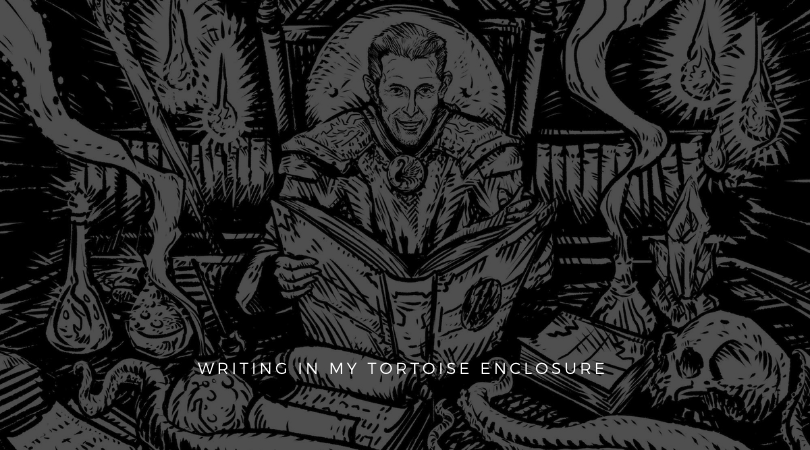Writing in My Tortoise Enclosure

I recently posted Reading About Writing in which I revealed three books about writing I had recently purchased.
One of those books is Chris Fox's 5,000 Words per Hour. I’ve tried design sprints before, but not in the way Chris recommends. While I question the wisdom of writing 5,000 words an hour—I’m sure many of my words would be crap—I was intrigued by the idea of WPH (words per hour), design sprints and how they intersect with the concept of deep work (which I first came across in the excellent Cal Newport book of the same name).
5,000 Words per Hour is a short book—I got through it in under two hours including watching the recommended John Cleese video on creativity. (Many different edits and versions are available on Youtube).
It was well worth the investment in time. Given I'm always seeking to get better at this writing and publishing lark, I thought I'd have a go at a design sprint.
How I Did It
To create the optimum conditions for my design sprint I followed Chris’s advice and created my “Tortoise Enclosure”.
I created a boundary of time in which I could work. For me, 8am - 9am seems to be the optimum time. (But more experimentation is probably in order.) At this hour, my brain is awake, my design muscle is limber and no-one visits Global HQ.
I created a boundary of space in which I could work undistracted. I have an office, and can close the door, but that doesn't stop the constant binging of my devices. Thus, I created a Deep Work focus mode. Deep Focus mode uses the new iOS and Mac OS Focus feature. I designed my Deep Focus mode to block all notifications on all my devices except text messages from my wife and children. No other notifications get through—my devices are utterly silent during that time. Deep Focus mode turns on every day automatically at 8 am and turns off automatically at 9 am. (Have I mentioned before, I love automation?)
Results & Notes
The results appear below in handy graph form:

I did not write for a whole hour every day. For example, on Monday, Tuesday and Friday I worked for the whole hour, but on Wednesday and Thursday I did not.
On Monday and Tuesday, I wrote the bulk of a 20 Things book (February’s release, if you are interested). On Wednesday I decided to finish the book (about 300 words) and then stop.
On Thursday I wrote two new locations for Dunstone (each about 350 words) and then stopped.
On Friday, I started work on random generation tables for Dunstonian sights and sounds.
The Word Per Hour figures for days in which I did not write for the full hour are proportionally scaled up.
Over the experiment I wrote 5,385 words. It's fair to say they won't all survive the editing process, but I think the experiment was a resounding success. Cal Newport's Deep Work book is one of the most influential I have ever read and the concept of a writing sprint proved how valuable deep work can be.
To put it into context, let’s say my Deep Work WPH figure is 1,400. That means if I did one hour of Deep Work a day in my Tortoise Enclosure I would write 42,000 words over a 30-day month. That's the first draft of a 50+ page supplement or adventure for a trivial investment in time. Looks like in December, I might be trying another, larger experiment…but on what?

Member discussion